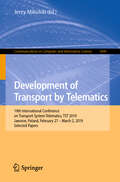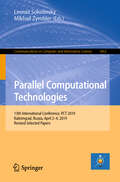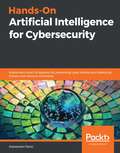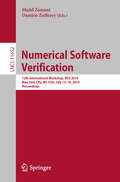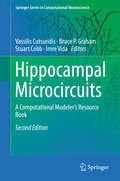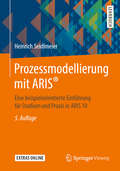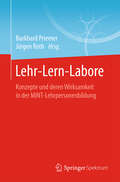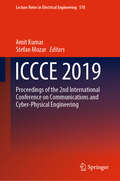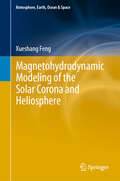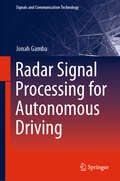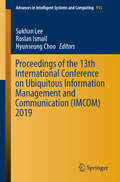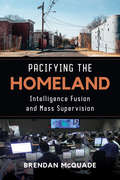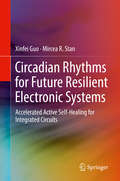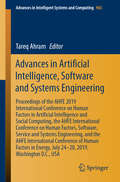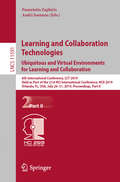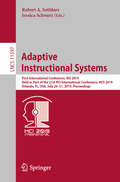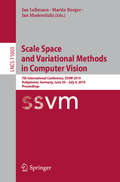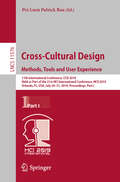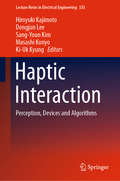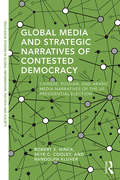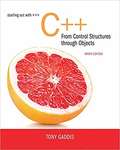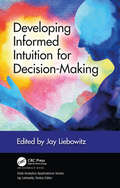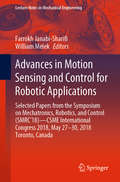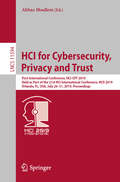- Table View
- List View
Development of Transport by Telematics: 19th International Conference on Transport System Telematics, TST 2019, Jaworze, Poland, February 27 – March 2, 2019, Selected Papers (Communications in Computer and Information Science #1049)
by Jerzy MikulskiThis book constitutes selected papers from the 19th International Conference on Transport Systems Telematics, TST 2019, held in Jaworze, near Bielsko-Biala, Poland, in March 2019. The 31 full papers presented in this volume were carefully reviewed and selected from 104 submissions. They were organized in topical sections named: telematics in rail transport; telematics in road transport; telematics in marine transport; telematics in air transport; and general about telematics.
Parallel Computational Technologies: 13th International Conference, PCT 2019, Kaliningrad, Russia, April 2–4, 2019, Revised Selected Papers (Communications in Computer and Information Science #1063)
by Leonid Sokolinsky Mikhail ZymblerThis book constitutes the refereed proceedings of the 13th International Conference on Parallel Computational Technologies, PCT 2019, held in Kaliningrad, Russia, in April 2019.The 24 revised full papers presented were carefully reviewed and selected from 96 submissions. The papers are organized in topical sections on high performance architectures, tools and technologies; parallel numerical algorithms; supercomputer simulation.
Hands-On Artificial Intelligence for Cybersecurity: Implement smart AI systems for preventing cyber attacks and detecting threats and network anomalies
by Alessandro ParisiBuild smart cybersecurity systems with the power of machine learning and deep learning to protect your corporate assets Key Features Identify and predict security threats using artificial intelligence Develop intelligent systems that can detect unusual and suspicious patterns and attacks Learn how to test the effectiveness of your AI cybersecurity algorithms and tools Book Description Today's organizations spend billions of dollars globally on cybersecurity. Artificial intelligence has emerged as a great solution for building smarter and safer security systems that allow you to predict and detect suspicious network activity, such as phishing or unauthorized intrusions. This cybersecurity book presents and demonstrates popular and successful AI approaches and models that you can adapt to detect potential attacks and protect your corporate systems. You'll learn about the role of machine learning and neural networks, as well as deep learning in cybersecurity, and you'll also learn how you can infuse AI capabilities into building smart defensive mechanisms. As you advance, you'll be able to apply these strategies across a variety of applications, including spam filters, network intrusion detection, botnet detection, and secure authentication. By the end of this book, you'll be ready to develop intelligent systems that can detect unusual and suspicious patterns and attacks, thereby developing strong network security defenses using AI. What you will learn Detect email threats such as spamming and phishing using AI Categorize APT, zero-days, and polymorphic malware samples Overcome antivirus limits in threat detection Predict network intrusions and detect anomalies with machine learning Verify the strength of biometric authentication procedures with deep learning Evaluate cybersecurity strategies and learn how you can improve them Who this book is for If you're a cybersecurity professional or ethical hacker who wants to build intelligent systems using the power of machine learning and AI, you'll find this book useful. Familiarity with cybersecurity concepts and knowledge of Python programming is essential to get the most out of this book.
Numerical Software Verification: 12th International Workshop, NSV 2019, New York City, NY, USA, July 13–14, 2019, Proceedings (Lecture Notes in Computer Science #11652)
by Majid Zamani Damien ZuffereyThis book constitutes the proceedings of the 12th International Workshop on Numerical Software Verification, NSV 2019, held in New York City, NY, USA, in July 2019 - colocated with the International Conference on Computer Aided Verification, CAV 2019. The 5 full papers presented together with 2 short papers, 3 abstracts of invited talks, and 2 tutorial papers were carefully reviewed and selected from numerous submissions. The NSV 2017 workshop is dedicated to the development of logical and mathematical techniques for the reasoning about programmability and reliability.
Hippocampal Microcircuits: A Computational Modeler's Resource Book (Springer Series in Computational Neuroscience #5)
by Vassilis Cutsuridis Bruce P. Graham Stuart Cobb Imre VidaThis is the 2nd edition of a very well received and popular book that reflects the current state-of-the-art of the ongoing research avenues concerning the hippocampus and processing units bridging the gap between single cell activity, network activity and global brain function. It aims to provide a methodology to anyone interested in developing microcircuit level models of the hippocampus. <P><P> The book is divided into two thematic areas: (I) Experimental background and (II) Computational analysis. In part I, leading experimental neuroscientists discuss the morphological, physiological and molecular characteristics as well as the connectivity and synaptic properties of the various cell types found in the hippocampus. Behaviour-related ensemble activity patterns of morphologically identified neurons in anesthetized and freely moving animals provide insights on the function of the hippocampal areas. In part II, computational neuroscientists present models of the hippocampal microcircuits at various levels of detail (e.g. single cell level, network level, etc.). Synaptomics and connectomics models of hippocampal structures are initially discussed. Then, network models of memory, rhythm generation and spatial navigation are presented, followed by abstract and biophysical models of synaptic plasticity. Network models of hippocampal implicated disorders (epilepsy and schizophrenia) are then detailed and how their network topologies, connectivities and activities change in these diseases. Finally, two chapters are dedicated to describing simulator environments of single neurons and networks currently used by computational neuroscientists in developing their models and modelling tools to parametrically constrain them. <P><P> This engaging volume is invaluable to experimental and computational neuroscientists, electrical engineers, physicists, mathematicians and others interested in developing microcircuit models of the hippocampus. Graduate level students and trainees in all of these fields can find this book a significant source of information.
Prozessmodellierung mit ARIS®: Eine beispielorientierte Einführung für Studium und Praxis in ARIS 10
by Heinrich SeidlmeierDieses Buch bietet eine praktische Einführung in die Software ARIS Der ARIS Architect 10 der Software AG ist eines der weltweit führenden Prozessmodellierungstools. Dieses Buch bietet eine umfangreiche Einführung in das ARIS-Konzept und das praktische Arbeiten mit der Software. Ziel ist es, das tägliche Arbeiten und einfache Projekte mit ARIS selbstständig zu erledigen. Im Vordergrund stehen die Modellierung und Modellauswertung. Der ARIS-Versionswechsel von 9 auf 10 machte eine Überarbeitung dieses Buchs unumgänglich, die der Autor in der vorliegenden fünften Auflage umgesetzt hat. Dafür hat er die komplette Funktionalität überprüft und angepasst. Das neue Kapitel 2 beschreibt in kurzen Zügen die innovative „ARIS Cloud“ für das orts- und zeitunabhängige Teamwork. Zahlreiche Aufgaben und zwei umfangreiche Fallstudien (jeweils mit Lösungen) bieten eigenständige Übungsmöglichkeiten. Das Buch ist als ARIS-Einführung auch für das Selbststudium bestens geeignet. Abbildungen und Modelle stehen zum Download zur Verfügung und veranschaulichen das Gelernte. Der Autor bringt Ihnen den Umgang mit der Software bei Nach einer kurzen Einführung in das Prozessmanagement beschäftigt sich der Autor unter anderem mit den folgenden Thematiken:· ARIS Cloud· Geschäftsprozessmodellierung und -optimierung· Systemverwaltung· Modellgestützte Prozessanalyse· BPMN 2.0 mit ARIS Mit seinem Buch schafft Heinrich Seidlmeier eine Einführung in ARIS für Studierende, aber auch für Praktiker in Beruf und Weiterbildung.
Lehr-Lern-Labore: Konzepte und deren Wirksamkeit in der MINT-Lehrpersonenbildung
by Burkhard Priemer Jürgen RothAn verschiedenen Hochschulen werden in den MINT-Fächern Schülerlabore in die Lehrpersonenbildung integriert. In diesen - als Lehr-Lern-Labore bezeichneten - Einrichtungen werden MINT-Lernumgebungen für Schülerinnen und Schüler, Veranstaltungen der Lehrpersonenbildung und an vielen Standorten auch fachdidaktische Forschung fruchtbar miteinander verknüpft. Das Ziel ist dabei, evidenzbasiert innovative Lehrkonzepte für Schule und Hochschule zu entwickeln und zu implementieren. In diesem Band werden Lehr-Lern-Labore zunächst allgemein beschrieben und dann durch zahlreiche Beispiele von Konzepten verschiedener Hochschulstandorte illustriert. Darüber hinaus wird berichtet, welche Wirksamkeit Lehr-Lern-Labore bei der Förderung von Kompetenzen zukünftiger Lehrpersonen haben und wie Studierende diese Einrichtungen wahrnehmen. Die vorgestellten Forschungsergebnisse, die aus einem Verbund von sechs Hochschulen stammen, sollen durch diesen Band weiteren Standorten zugänglich gemacht werden. Dieses Buch richtet sich an Studierende und Dozierende der Lehrpersonenbildung in Hochschulen - insbesondere in den MINT-Fachdidaktiken - sowie an Personen in Schule und Referendariat.
ICCCE 2019: Proceedings of the 2nd International Conference on Communications and Cyber Physical Engineering (Lecture Notes in Electrical Engineering #570)
by Amit Kumar Stefan MozarThis book is a collection research papers and articles from the 2nd International Conference on Communications and Cyber-Physical Engineering (ICCCE – 2019), held in Pune, India in Feb 2019. Discussing the latest developments in voice and data communication engineering, cyber-physical systems, network science, communication software, image- and multimedia processing research and applications, as well as communication technologies and other related technologies, it includes contributions from both academia and industry.
Magnetohydrodynamic Modeling of the Solar Corona and Heliosphere (Atmosphere, Earth, Ocean & Space)
by Xueshang FengThe book covers intimately all the topics necessary for the development of a robust magnetohydrodynamic (MHD) code within the framework of the cell-centered finite volume method (FVM) and its applications in space weather study. First, it presents a brief review of existing MHD models in studying solar corona and the heliosphere. Then it introduces the cell-centered FVM in three-dimensional computational domain. Finally, the book presents some applications of FVM to the MHD codes on spherical coordinates in various research fields of space weather, focusing on the development of the 3D Solar-InterPlanetary space-time Conservation Element and Solution Element (SIP-CESE) MHD model and its applications to space weather studies in various aspects. The book is written for senior undergraduates, graduate students, lecturers, engineers and researchers in solar-terrestrial physics, space weather theory, modeling, and prediction, computational fluid dynamics, and MHD simulations. It helps readers to fully understand and implement a robust and versatile MHD code based on the cell-centered FVM.
Radar Signal Processing for Autonomous Driving (Signals and Communication Technology)
by Jonah GambaThe subject of this book is theory, principles and methods used in radar algorithm development with a special focus on automotive radar signal processing. In the automotive industry, autonomous driving is currently a hot topic that leads to numerous applications for both safety and driving comfort. It is estimated that full autonomous driving will be realized in the next twenty to thirty years and one of the enabling technologies is radar sensing. This book presents both detection and tracking topics specifically for automotive radar processing. It provides illustrations, figures and tables for the reader to quickly grasp the concepts and start working on practical solutions. The complete and comprehensive coverage of the topic provides both professionals and newcomers with all the essential methods and tools required to successfully implement and evaluate automotive radar processing algorithms.
Proceedings of the 13th International Conference on Ubiquitous Information Management and Communication (Advances in Intelligent Systems and Computing #935)
by Sukhan Lee Roslan Ismail Hyunseung ChooOver past few years, technologies have experienced boundaries getting blurred and concept of convergence to gain prominence. Harnessing from this, two main tracks for information processing management and communication are held, covering both research and application works of information management, intelligent information processing, interaction management, networking/ telecommunications, and social interaction. This book creates unique opportunity for research convergence among truly diverse technology domains of computer science. Leveraging from this diversity of topics, researchers get to generate novel research ideas by seeking application of their research in a different technology domain. This volume represents the collection of papers presented at the 13th International Conference on Ubiquitous Information Management and Communication (IMCOM 2019), held on 4-6 January 2019 in Phuket, Thailand. Out of 228 papers submitted from all around the world 88 papers were accepted for presentations. The 88 contributions to this volume are organized into 5 chapters: Chapter 1. Network Evolution, Chapter 2. Intelligent and Secure Network, Chapter 3. Image and Video Processing, Chapter 4. Information Technology and Society, and Chapter 5. Data Mining and Learning. Our editors wish readers to find this volume informative and enjoyable.
Pacifying the Homeland: Intelligence Fusion and Mass Supervision
by Brendan McQuadeThe United States has poured over a billion dollars into a network of interagency intelligence centers called “fusion centers.” These centers were ostensibly set up to prevent terrorism, but politicians, the press, and policy advocates have criticized them for failing on this account. So why do these security systems persist? Pacifying the Homeland travels inside the secret world of intelligence fusion, looks beyond the apparent failure of fusion centers, and reveals a broader shift away from mass incarceration and toward a more surveillance- and police-intensive system of social regulation. Provided with unprecedented access to domestic intelligence centers, Brendan McQuade uncovers how the institutionalization of intelligence fusion enables decarceration without fully addressing the underlying social problems at the root of mass incarceration. The result is a startling analysis that contributes to the debates on surveillance, mass incarceration, and policing and challenges readers to see surveillance, policing, mass incarceration, and the security state in an entirely new light.
Circadian Rhythms for Future Resilient Electronic Systems: Accelerated Active Self-Healing for Integrated Circuits
by Xinfei Guo Mircea R. StanThis book describes methods to address wearout/aging degradations in electronic chips and systems, caused by several physical mechanisms at the device level. The authors introduce a novel technique called accelerated active self-healing, which fixes wearout issues by enabling accelerated recovery. Coverage includes recovery theory, experimental results, implementations and applications, across multiple nodes ranging from planar, FD-SOI to FinFET, based on both foundry provided models and predictive models. Presents novel techniques, tested with experiments on real hardware;Discusses circuit and system level wearout recovery implementations, many of these designs are portable and friendly to the standard design flow;Provides circuit-architecture-system infrastructures that enable the accelerated self-healing for future resilient systems;Discusses wearout issues at both transistor and interconnect level, providing solutions that apply to both;Includes coverage of resilient aspects of emerging applications such as IoT.
Advances in Artificial Intelligence, Software and Systems Engineering: Proceedings of the AHFE 2019 International Conference on Human Factors in Artificial Intelligence and Social Computing, the AHFE International Conference on Human Factors, Software, Service and Systems Engineering, and the AHFE International Conference of Human Factors in Energy, July 24-28, 2019, Washington D.C., USA (Advances in Intelligent Systems and Computing #965)
by Tareq AhramThis book addresses emerging issues resulting from the integration of artificial intelligence systems in our daily lives. It focuses on the cognitive, visual, social and analytical aspects of computing and intelligent technologies, highlighting ways to improve the acceptance, effectiveness, and efficiency of said technologies. Topics such as responsibility, integration and training are discussed throughout. The book also reports on the latest advances in systems engineering, with a focus on societal challenges and next-generation systems and applications for meeting them. The book is based on two AHFE 2019 Affiliated Conferences – on Artificial Intelligence and Social Computing, and on Service, Software, and Systems Engineering –, which were jointly held on July 24–28, 2019, in Washington, DC, USA.
Learning and Collaboration Technologies. Ubiquitous and Virtual Environments for Learning and Collaboration: 6th International Conference, LCT 2019, Held as Part of the 21st HCI International Conference, HCII 2019, Orlando, FL, USA, July 26–31, 2019, Proceedings, Part II (Lecture Notes in Computer Science #11591)
by Panayiotis Zaphiris Andri IoannouThis two-volume set LNCS 11590 and 11591 constitutes the refereed proceedings of the 6th International Conference on Learning and Collaboration Technologies, LCT 2019, held as part of the 21st International Conference on Human-Computer Interaction, HCII 2019, in Orlando, FL, USA in July 2019. The 1274 full papers 209 posters presented at the HCII 2019 conferences were carefully reviewed and selected from 5029 submissions. The papers cover the entire field of human-computer interaction, addressing major advances in knowledge and effective use of computers in a variety of applications areas. The papers in this volume are organized in the following topical sections: mobile and ubiquitous learning; virtual reality and augmented reality systems for learning; and collaborative technology.
Adaptive Instructional Systems: First International Conference, AIS 2019, Held as Part of the 21st HCI International Conference, HCII 2019, Orlando, FL, USA, July 26–31, 2019, Proceedings (Lecture Notes in Computer Science #11597)
by Robert A. Sottilare Jessica SchwarzThis book constitutes the refereed proceedings of the First International Conference on Adaptive Instructional Systems, AIS 2019, held in July 2019 as part of HCI International 2019 in Orlando, FL, USA. HCII 2019 received a total of 5029 submissions, of which 1275 papers and 209 posters were accepted for publication after a careful reviewing process. The 50 papers presented in this volume are organized in topical sections named: Adaptive Instruction Design and Authoring, Interoperability and Standardization in Adaptive Instructional Systems, Instructional Theories in Adaptive Instruction, Learner Assessment and Modelling, AI in Adaptive Instructional Systems, Conversational Tutors.
Scale Space and Variational Methods in Computer Vision: 7th International Conference, SSVM 2019, Hofgeismar, Germany, June 30 – July 4, 2019, Proceedings (Lecture Notes in Computer Science #11603)
by Jan Lellmann Martin Burger Jan ModersitzkiThis book constitutes the proceedings of the 7th International Conference on Scale Space and Variational Methods in Computer Vision, SSVM 2019, held in Hofgeismar, Germany, in June/July 2019. The 44 papers included in this volume were carefully reviewed and selected for inclusion in this book. They were organized in topical sections named: 3D vision and feature analysis; inpainting, interpolation and compression; inverse problems in imaging; optimization methods in imaging; PDEs and level-set methods; registration and reconstruction; scale-space methods; segmentation and labeling; and variational methods.
Cross-Cultural Design. Methods, Tools and User Experience: 11th International Conference, CCD 2019, Held as Part of the 21st HCI International Conference, HCII 2019, Orlando, FL, USA, July 26–31, 2019, Proceedings, Part I (Lecture Notes in Computer Science #11576)
by Pei-Luen Patrick RauThis two-volume set LNCS 11576 and 11577 constitutes the thoroughly refereed proceedings of the 11th International Conference on Cross-Cultural Design, CCD 2019, which was held as part of the 21st HCI International Conference, HCII 2019, in Orlando, FL, USA, in July 2019. The total of 1275 papers and 209 posters included in the 35 HCII 2019 proceedings volumes were carefully reviewed and selected from 5029 submissions. CCD 2019 includes a total of 80 papers; they were organized in topical sections named: Part I, Methods, Tools and User Experience: Cross-cultural design methods and tools; culture-based design; cross-cultural user experience; cultural differences, usability and design; aesthetics and mindfulness. Part II, Culture and Society: Cultural products; experiences and creativity; design for social change and development; cross-cultural product and service design; intercultural learning.
Haptic Interaction: Perception, Devices and Algorithms (Lecture Notes in Electrical Engineering #535)
by Hiroyuki Kajimoto Ki-Uk Kyung Masashi Konyo Dongjun Lee Sang-Youn KimThis book constitutes the proceedings of the third international conference AsiaHaptics 2018, held in Songdo, Korea. It presents the state-of-the-art of the diverse haptics (touch)-related research, including perception and illusion, development of haptics devices, and applications to a wide variety of fields such as education, medicine, telecommunication, navigation and entertainment. This book is a valuable resource not only for active haptics researchers, but also for general readers wishing to understand the status quo in this interdisciplinary area of science and technology.
So You Want to Start a Podcast: Finding Your Voice, Telling Your Story, and Building a Community That Will Listen
by Kristen MeinzerAn inspiring, comprehensive, step-by-step guide to creating a hit show, So You Want to Start a Podcast covers everything from hosting and guest booking to editing and marketing - while offering plenty of encouragement and insider stories along the way. Though they are the fastest-growing form of media, podcasts can actually be tricky to create—and even harder to sustain. Few know the secrets of successfully creating a knockout podcast better than Kristen Meinzer. An award-winning commentator, producer, and former director of nonfiction programming for Slate’s sister company, Panoply, Meinzer has also hosted three successful podcasts, reaching more than ten million listeners. Now, she shares her expertise, providing aspiring podcasters with crucial information and guidance to work smarter, not harder as they start their own audio forum.Meinzer believes that we each have a unique voice that deserves to be heard. But many of us may need some help transforming our ideas into reality. So You Want to Start a Podcast asks the tough but important questions to help budding podcasters define and achieve their goals, including:Why do you want to start a podcast? Think about specifically why you want to start a podcast versus a blog, zine, YouTube channel, Instagram feed, or other media outlet. Find out if a podcast is really the best way to tell your story—and what you really need (and don’t need!) in order to get started.What is your show about? For any advertiser, corporate partner, or press outlet, you need a snappy pitch. How would you describe what you want to do in two to three sentences?Who is your podcast for? Who are you trying to reach? How will your content and tone appeal to those listeners?How is your show going to be structured? Create a step-by-step map planning the show out. Think about length, segments, interviews, advice, news reads, and other aspects of successful podcasts you can adapt for your own.With this motivational how-to guide—the only one on the subject available—you’ll find the smart, bottom-line advice and inspiration you need to produce an entertaining and informative podcast and promote it to an audience that will love it. So You Want to Start a Podcast gives you the tools you need to start a podcast—and the insight to keep it thriving!
Global Media and Strategic Narratives of Contested Democracy: Chinese, Russian, and Arabic Media Narratives of the US Presidential Election (Routledge Studies in Global Information, Politics and Society)
by Robert S. Hinck Skye C. Cooley Randolph KluverIn order to better understand how the world viewed the US 2016 presidential election, the issues that mattered around the world, and how nations made sense of how their media systems constructed presentations of the presidential election, Robert S. Hinck, Skye C. Cooley, and Randolph Kluver examine global news narratives during the campaign and immediately afterwards. Analyzing 1,578 news stories from 62 sources within three regional media ecologies in China, Russia, and the Middle East, Hinck, Cooley, and Kluver demonstrate how the US election was incorporated into narrative constructions of the global order. They establish that the narratives told about the US election through national and regional media provide insights into how foreign nations construct US democracy, and reflect local understandings regarding the issues, and impacts, of US policy towards those nations. Avoiding jargon-laden prose, Global Media and Strategic Narratives of Contested Democracy is as accessible as it is wide-ranging. Its empirical detail will expand readers’ understanding of soft power as narrative articulations of foreign nation’s policies, values, and beliefs within localized media systems. Communication/media studies students, as well as political scientists whose studies includes media and global politics, will welcome its publication.
Starting Out With C++: From Control Structures To Objects
by Tony Gaddisand pointers before objects and classes in Tony Gaddis’s hallmark accessible, step-by-step presentation. His books help beginning students understand the important details necessary to become skilled programmers at an introductory level. Gaddis motivates the study of both programming skills and the C++ programming language by presenting all the details needed to understand the “how” and the “why”–but never losing sight of the fact that most beginners struggle with this material. His approach is gradual and highly accessible, ensuring that students understand the logic behind developing high-quality programs. As with all Gaddis texts, clear and easy-to-read code listings, concise and practical real-world examples, and an abundance of exercises appear in every chapter. Updates to the 9th Edition include revised, improved problems throughout and a new chapter featuring completely rewritten and expanded material on the Standard Template Library (STL).
Developing Informed Intuition for Decision-Making (Data Analytics Applications)
by Jay LiebowitzThis book examines how to develop the main traits that are necessary to become an “informed intuitant”. Case studies and examples of successful “informed intuitants” are a major component of the book. “Intuitant” is someone who has the intuitive awareness to be successful. “Informed intuitant” indicates that the individual/decision maker not only applies his/her intuition but also verifies it through using data-driven approaches (such as data analytics). Some of this work resulted from research examining how well do executives trust their intuition.
Advances in Motion Sensing and Control for Robotic Applications: Selected Papers from the Symposium on Mechatronics, Robotics, and Control (SMRC’18)- CSME International Congress 2018, May 27-30, 2018 Toronto, Canada (Lecture Notes in Mechanical Engineering)
by Farrokh Janabi-Sharifi William MelekThis book reports on advances in sensing, modeling and control methods for different robotic platforms such as multi-degree of freedom robotic arms, unmanned aerial vehicles and autonomous mobile platforms. Based on 2018 Symposium on Mechatronics, Robotics, and Control (SMTRC’18), held as part of the 2018 CSME International Congress, in York University, Toronto, Canada, the book covers a variety of topics, from filtering and state estimation to adaptive control of reconfigurable robots and more. Next-generation systems with advanced control, planning, perception and interaction capabilities will achieve functionalities far beyond today’s technology. Two key challenges remaining for advanced robot technologies are related to sensing and control in robotic systems. Advanced perception is needed to navigate changing environments. Adaptive and intelligent control systems must be developed to enable operation in unstructured and dynamic environments. The selected chapters in this book focus on both of the aforementioned areas and highlight the main trends and challenges in robot sensing and control. The first part of the book introduces chapters which focus on advanced perception and sensing for robotics applications. They include sensor filtering and state estimation for bipedal robots and motion capture systems analysis. The second part focuses on different modeling and control methods for robotic systems including flight control for UAVs, multi-variable robust control for modular and reconfigurable robotics and control for precision micromanipulation.
HCI for Cybersecurity, Privacy and Trust: First International Conference, HCI-CPT 2019, Held as Part of the 21st HCI International Conference, HCII 2019, Orlando, FL, USA, July 26–31, 2019, Proceedings (Lecture Notes in Computer Science #11594)
by Abbas MoallemThis book constitutes the thoroughly refereed proceedings of the First International Conference on HCI for Cybersecurity, Privacy and Trust, HCI-CPT 2019, which was held as part of the 21st HCI International Conference, HCII 2019, in Orlando, FL, USA, in July 2019.The total of 1275 papers and 209 posters included in the 35 HCII 2019 proceedings volumes were carefully reviewed and selected from 5029 submissions. HCI-CPT 2019 includes a total of 32 papers; they were organized in topical sections named: Authentication; cybersecurity awareness and behavior; security and usability; and privacy and trust.
